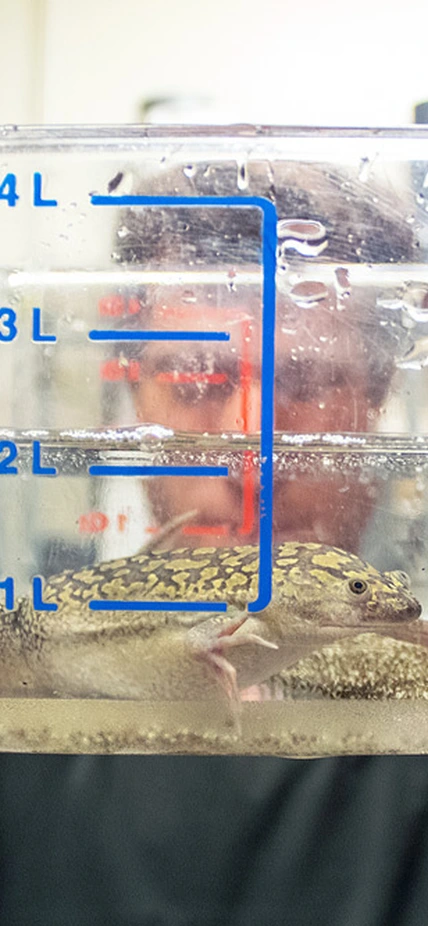Baltimore, MD — The National Institutes of Health has recognized Carnegie’s Dr. Ross Pedersen with a prestigious Ruth L. Kirschstein Postdoctoral Individual National Research Service Award. The highly selective fellowship, worth about $200,000 over three years, will help Pedersen study the molecular mechanisms that drive nuclear lamin assembly.
The nucleus is the “brain” of the cell. It contains most of the cell’s genetic information and is essential to the function and organization of the cell’s cytoplasm. The nucleus itself is supported by a protective meshwork of fiber-forming proteins called lamins—but how lamins assemble into such a structure is poorly understood.
To study this mysterious phenomenon, Pedersen is running biochemical and live cell experiments, using eggs from the African clawed frog and embryonic stem cells from mutant mice that lack the ability to produce lamins, respectively.
In addition to shedding light on nuclear structure and function, Pedersen hopes to provide insight into the molecular mechanisms behind diseases associated with mutations in lamin genes—of which there are many.
“Different mutations nearby on the same lamin gene can cause vastly different clinical defects,” explains Pedersen. “So, you might have a mutation in one spot that causes muscular dystrophy—a muscle-weakening disease—whereas a mutation in the neighboring residue might cause progeria—the ‘rapid aging’ disease. Why one mutation would lead to one kind of defect, but another mutation would lead to such a different defect is still a mystery.”
Pedersen believes that this is because researchers know very little about how these proteins work, making it extremely difficult to compare wild-type and mutated lamin genes.
“My long-term goal is to work with some of these mutant proteins,” he says. “Do they assemble more slowly? Or in the wrong place? What is different about these mutant molecules that lead to such dramatic and diverse consequences?”
